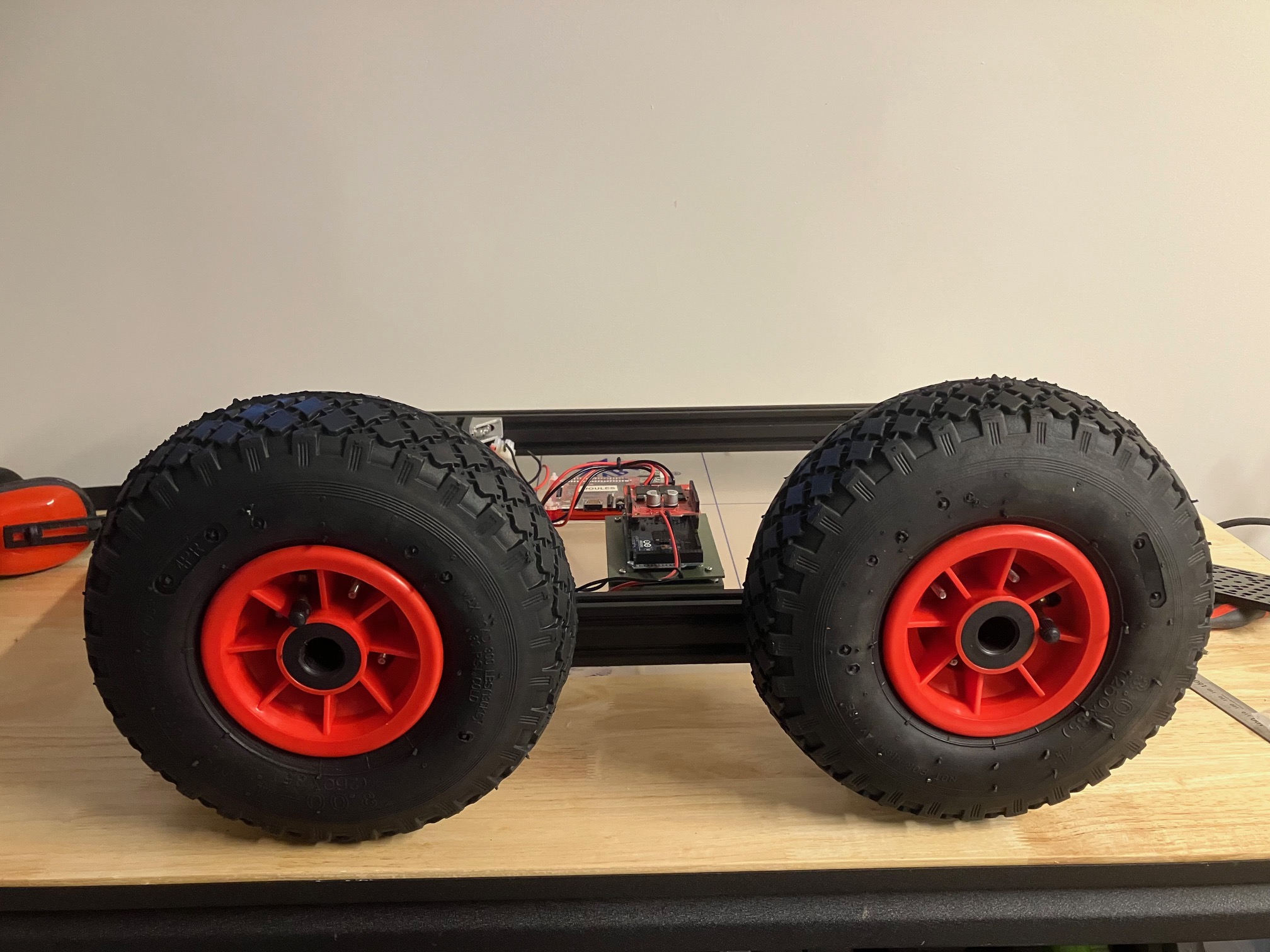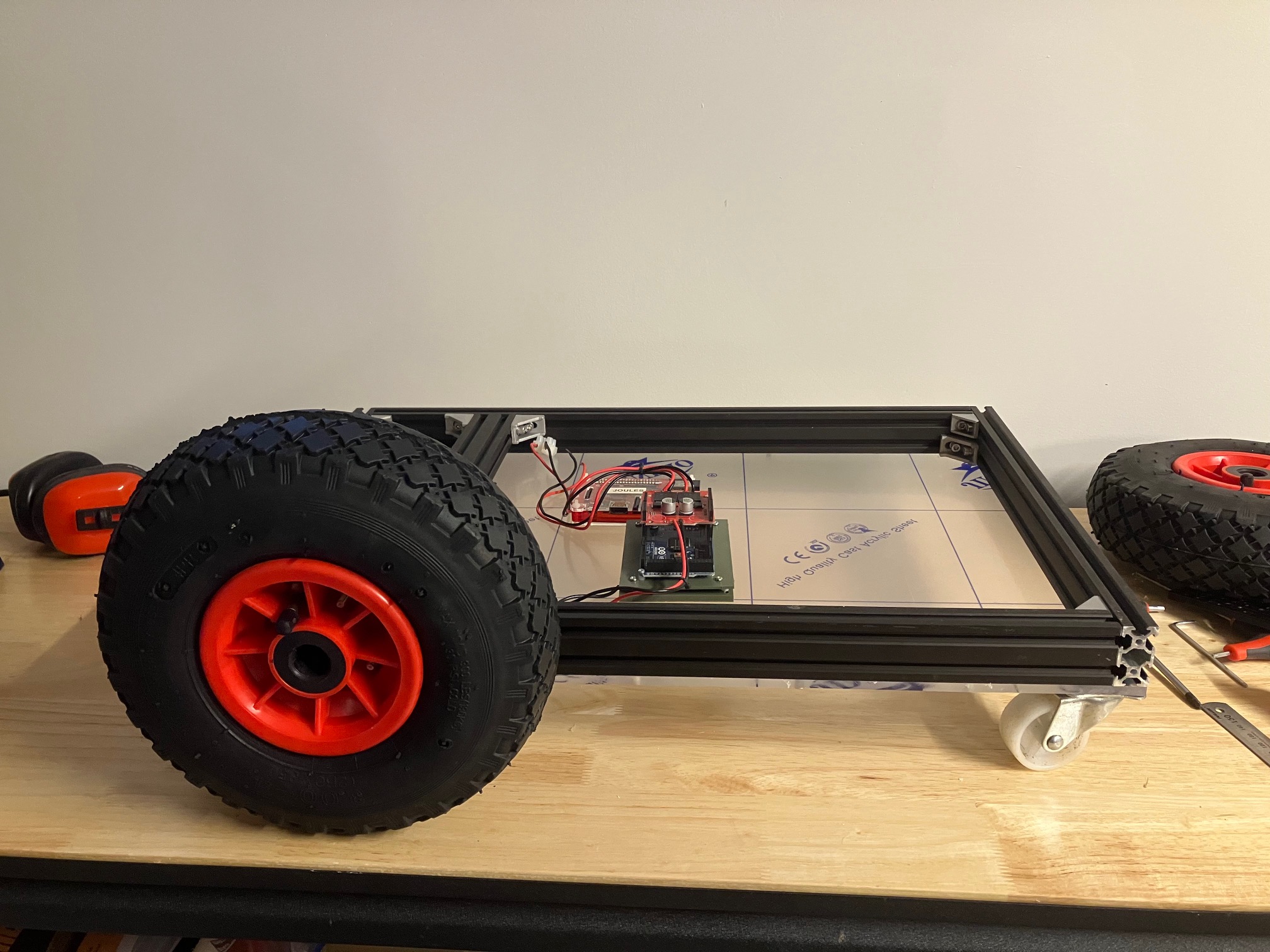| Home | Contents | Start | Prev | 1 | 2 | 3 | 4 | 5 | 6 | Next |
Motors and Wheels
I have tinkered with motor configurations on various robots. Differential steering is easy and the main descision is whether to have trailing castors or leading castors. Generally, I prefer trailing castors but I found for lawn mowers, real wheel drive gave better traction.
Since, this is a relatively large robot, I can consider using 4 wheel drive. Kupes design is such, it is relatively easy to change the configuration. While putting the chassis together, here are a couple of options.
Option 1: Four Wheel Drive

Option 2: Two wheel drive with leading/trailing castors

Drive Configuration Decisions
4WD gives much better traction and allows the robot to explore all sorts of terain. However, I see two main disadvantages:
- Double (or more) the power drain.
- Motor control complexity.
With all 4 wheels being driven, it will be necessary to keep their speeds synchronized to prevent drift. Also, turning will be more complex as the inside wheels will need to be slowed down (or outer wheels sped up) to execute a turn without fighting against the other motors. To achieve all this, I will need to individually control all 4 motors, and probably need to wheel encoders to keep them all in sync.
Although challenging, controlling 4 motors is definitely possible and the resulting rover will be quite a cool little beast. However, I have to consider what my goal is, to build a navigation robot that uses cameras. Going down a rabbit-hole of 4WD will detract from my goal so I am going with 2WD and castors initially. Adding 4WD may come one day, but my time is limited.
Push or pull? I prefer front-wheel drive but I think I'll go with rear wheel drive initially as I can put distance between the cameras, sensors and electronics from the motors. This worked well on moana so I'll take that experience forward. It will not be a major issue to change to front-wheel drive as all the boards and wiring aim to be easily configurable (ie changing everything may only take a day).
Note: I will initially "liberate" the castors from Moana. These a a little large (50mm vs 40mm) so the base will not be exactly level. I can sort that out later, keeping focused on just getting something up and running first.
Wheels
These are the drive wheels: Kupe
Wheel diameter is 260mm.
These are the castors: Kupe
Caster diameter is 50mm.
Motors
When designing the chassis, I wanted highly geared motors with planetary gearboxes. The motors could be 24v or 12v. 24 volt motors will use less current but require more batteries and will require higher voltage motors drivers. I sourced 12V and 24V motors that where physically compatible to give me options. The 12v motor is slightly higher geared.
I had difficulty sourcing high torque geared motors on New Zealand so ordered some from Ali Express.
| 24v | 12v | |
|---|---|---|
| No load Speed | 37 rpm | 22rpm |
| Rated Speed | 30 rpm | 18 rpm |
| Rated Current | 0.5A | 1.2A |
| Rated Torque | 70kg-cm | 80kg-cm |
| Stall Torque | 110kg-cm | 130kg-cm |
| Stall Current | 5A | 7A |
Although they draw more current, I decided to go with 12V motors as I could reuse the motor driver I had used on Moana. With 260mm wheels, the maximum speed will be approximately Pi * 0.26 * 20rpm = 0.27m/s. So that means it will take approx 4 seconds to travel one metre. This is marginally slower than moana (0.32m/sec).
September 2025
| Home | Contents | Start | Prev | 1 | 2 | 3 | 4 | 5 | 6 | Next |